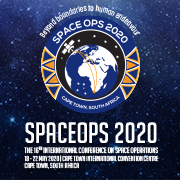›Magnetosphere-Ionosphere Coupling in the Solar System
Over the half century of exploration of the Earth’s space environment, it has become evident that the interaction between the ionosphere and the magnetosphere plays a dominant role in the evolution and dynamics of magnetospheric plasmas and fields. It is now being found that this same interaction is of basic importance at other planets and moons throughout the solar system and it is timely to bring the Earth and planetary sciences communities together to examine these important interactive processes. This conference is planned to occur on the 40th anniversary of the original magnetosphere-ionosphere coupling conference that took place at Yosemite National Park in 1974 giving a four decade perspective of our progress in understanding these fundamental processes.
This cross-disciplinary Chapman conference will examine the details of the ionosphere-magnetosphere coupling processes using results from both measurements and modeling. Topics that will be discussed include the ionosphere as a source of magnetospheric plasma, the effects of the low energy ionospheric plasma on the stability of the more energetic plasmas in the magnetosphere, the role of currents and electric/magnetic fields in coupling the two regions, the unified global modeling of the ionosphere and magnetosphere, and the coupling of the ionosphere and magnetosphere at other planets and moons throughout the solar system. Our goal is to enhance the understanding of this coupling among researchers in both the heliophysics and planetary science communities through the sharing of measurement and modeling techniques. Data from new missions (e.g. Radiation Belt Storm Probes) will be important sources of information. New Global Geospace Circulation Models being developed for the Earth’s space environment will also play a foundational role in modeling other planetary environments in the solar system.
Track this event on your Apple calendar














 United States
United States